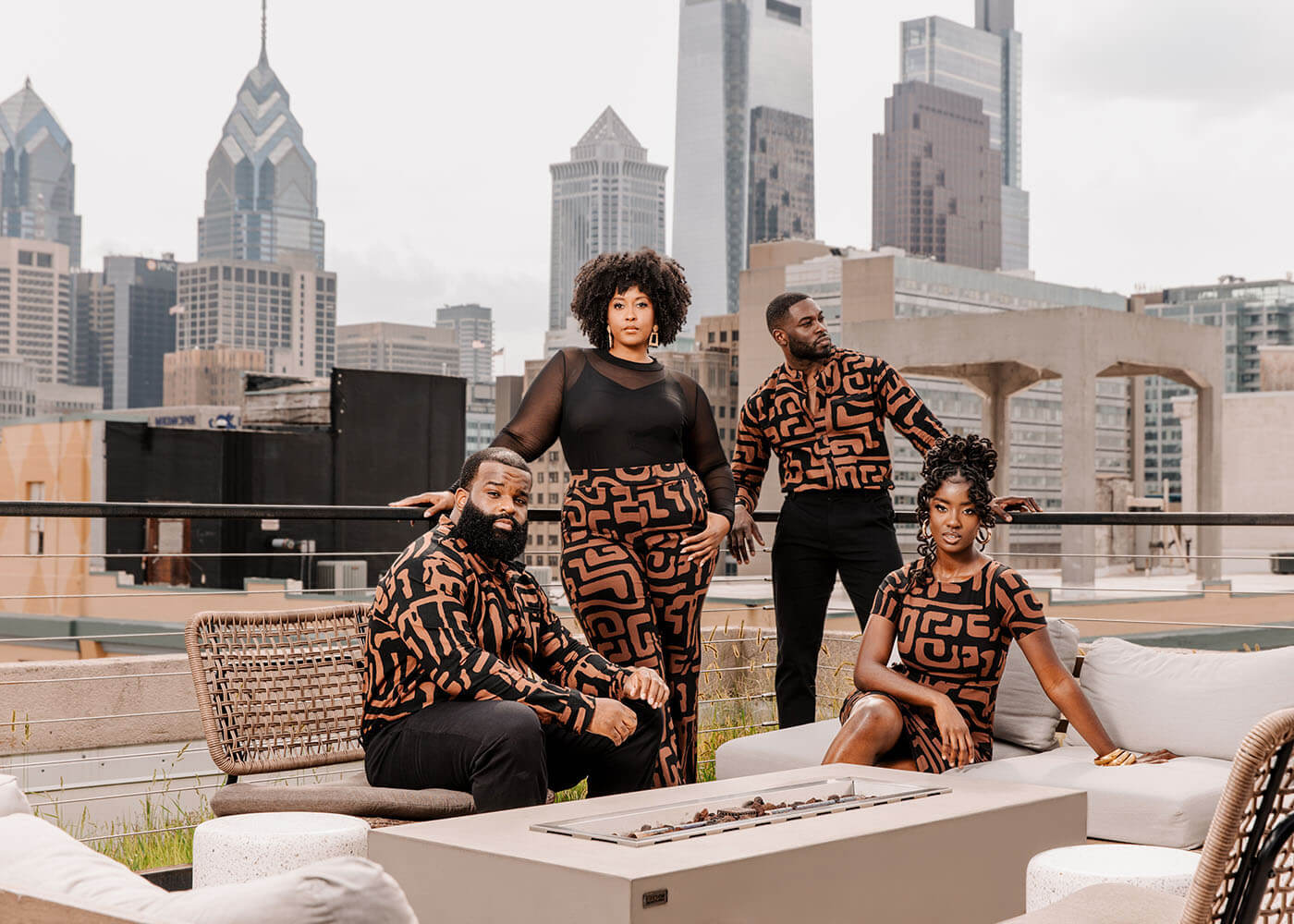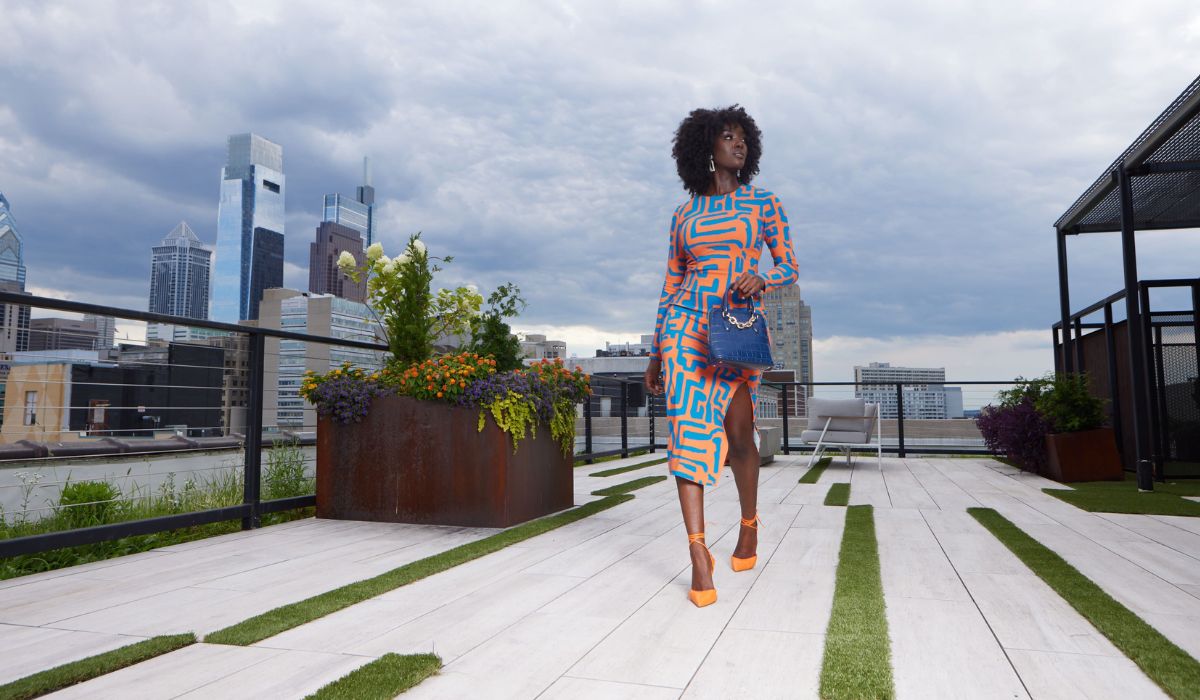African Dress History and Future with D'IYANU
The Most Popular African Fabrics for Modern African Dresses and They're History
African fashion boasts a diverse range of traditional fabric and attire, each with its own unique characteristics. If you enjoy bold printed fashion, traditional dashikis, or vivid colors, you'll love any one of the most popular traditional African print fabrics.

Traditional African Fabric #1: Mudcloth
Mudcloth, also known as bogolanfini, has a rich history rooted in Mali, West Africa, particularly among the Bambara people. Its creation dates back centuries and holds cultural significance.
The traditional process of creating mudcloth involves a labor-intensive method of dyeing and decorating cotton fabric. Traditionally, men weaved the cloth on narrow looms, while women were responsible for dyeing and designing the fabric.
As with most traditional African fabrics, mudcloth designs, patterns, and geometric shapes are often symbolic, representing aspects of Bambara culture including history, religion, and social status. Mudcloth tells a story and is a form of communication.
Over time, the beautiful mudcloth has gained international recognition for its beautiful designs and cultural significance.
At D'iyanu we honor these traditions and the cultural heritage while adding our own modern twist. Our modern mudcloth clothing for women, men, and children are some of our most popular styles including our modern natural mudclotth fashion collection which feature bold geometric shapes.
Traditional African Fabric #2: Ankara
Ankara fabric, also known as African wax print fabric, has a fascinating history that spans continents and cultures. Contrary to it's popularity in Africa, but in Indonesian. The Indonesian batik method involves using wax-resistant dyeing on fabric to create vibrant, intricate patterns.
In the early 20th century, Dutch traders brought these batik-inspired prints to West Africa and they became immensely popular among West African consumers, particularly in Ghana, Nigeria, and Senegal.
Local West African artisans and traders embraced these prints and adapted them to reflect their own cultural aesthetics and traditions. The fabric underwent modifications in design, color, and symbolism, incorporating patterns and motifs that held significance within African cultures.
Today, Ankara fabric continues to evolve, with modern designs, vibrant colors, and patterns reflecting contemporary African fashion trends. It's not just limited to Africa but has gained popularity globally, finding its place in high fashion, clothing, accessories, and interior design, celebrating the diversity and heritage of African culture. At D'iyanu, many of our African men's shirts are made using the popular African fabric Ankara.
Traditional African Fabric #3: Adire
Adire is a traditional indigo-dyed fabric originating from the Yoruba people of southwestern Nigeria. The word "adire" translates to "tie and dye" in Yoruba, reflecting the unique dyeing technique used to create its distinctive patterns.
Adire was historically made by women in Yoruba communities, with patterns and motifs often carrying cultural significance and symbolic meanings. These fabrics were used for clothing, ceremonies, and as a form of artistic expression.
We celebrate the tradition of African Adire while incorporating modern takes. Check out our collection of Adire-inspired clothing which include sweaters, dresses, and suits.
Traditional African Fabric #4: Kente Cloth
Like many traditional African patterns, each Kente design carries specific meanings and prestige. In fact, originally, Kente cloth was exclusively worn by Ashanti royalty and during special ceremonies like weddings and festivals.
Over time, its popularity spread beyond the Ashanti kingdom and became a symbol of Ghanaian cultural identity. It has transcended its traditional boundaries and is worn across the African diaspora and by people worldwide as a symbol of African heritage, pride, and identity.
Check out modern African dresses and clothing inspired by Kente cloth.
The Effects of Colonization and the Resilience of African Fashion
African Fashion Today

Designers like Addie Elabor, founder of D'IYANU, have been at the forefront of this movement, infusing African prints into their creations. D'IYANU and its visionary founder were honored with the prestigious "Best of Philly Women's-Wear Designer" award, a testament to the brand's commitment to African-inspired fashion.
The demand for African print dresses and the exploration of traditional craftsmanship will continue to drive innovation and creativity.
The Future of African Fashion
As we move forward, the future of African fashion shines brightly, promising to captivate the world with its vibrant colors, unique patterns, and powerful narratives. Shop inspiring & new modern African clothing here.

























Leave a comment
This site is protected by hCaptcha and the hCaptcha Privacy Policy and Terms of Service apply.